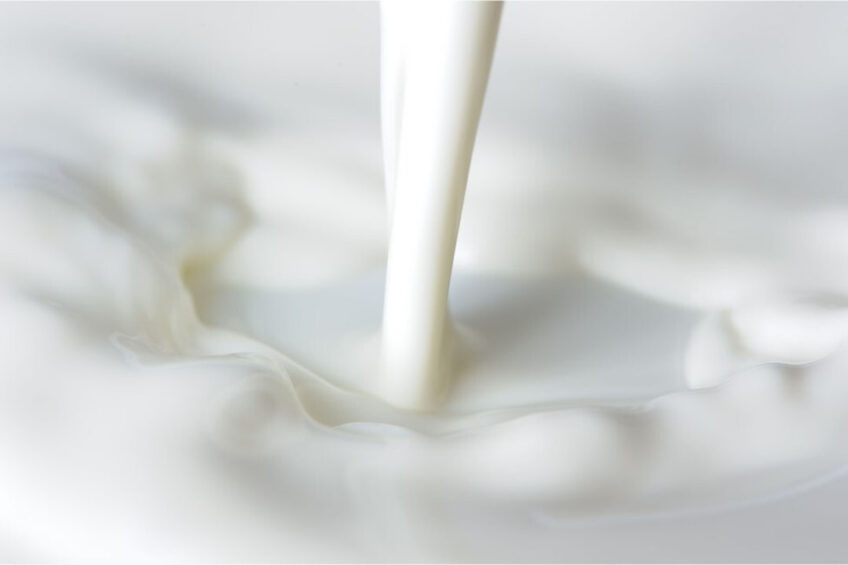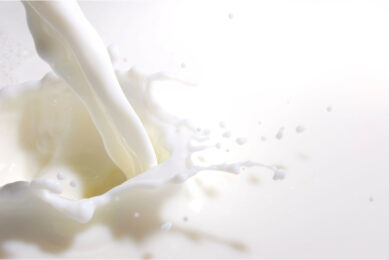How milking system and pre-milking routines affect milk quality

Different farm management factors employed in milking systems are the cause for variation in the microbial community present in bulk tank milk.
Several studies show that micro-organisms enter milk from a variety of sources and, once in milk, can play a number of roles, such as facilitating dairy fermentations (e.g. Lactococcus, Lactobacillus, Streptococcus, Propionibacterium and fungal populations), cause spoilage (e.g. Pseudomonas, Clostridium, Bacillus and other spore-forming or thermoduric micro-organisms), promote health (e.g. lactobacilli and bifidobacteria) or cause disease (e.g. Listeria, Salmonella, Escherichia coli, Campylobacter and mycotoxin-producing fungi). Therefore, the composition and diversity of the microbiota community is a good measure of milk quality, from both a spoilage or food safety perspective as well as the resulting implications for direct consumption and downstream processing.
Milking systems
In this study, researchers from the Swedish University of Agricultural Sciences explored the microbial community in tank milk from Swedish dairy farms using the following 3 different milking systems:
- Automatic (robot) milking system (AMS)
- Loose housing
- Tie-stall system.
Differences in the brand of milking robot, routines for teat preparation and cleaning of the equipment for the different milking systems were examined as the main factors behind observed differences in milk quality. Information relating to management practices (e.g., systems used for feed production and feeding facilities, housing and milking systems and routines for milking and cleaning of the equipment) was collected through a questionnaire and farm visits.
Researchers believe the overview is valuable to farmers using the different milking systems as it helps them focus more on critical control points to improve milk quality.
Microbial variation
The 5 most dominant bacteria overall in tank milk samples were Pseudomonas, Acinetobacter, Streptococcus, unclassified Peptostreptococcaceae and Staphylococcus. As indicated by the homogeneity comparison, the microbial community was sometimes similar and sometimes varied substantially within the same farm across different sampling occasions. The dominant genera also varied between farms. In milk from farms showing greater variation between sampling occasions, the dominant genera varied to a larger extent.
All AMS and milking parlour farms had loose housing, whereas all tie-stall farms had tie-stall housing. A clear difference in milk microbiota between AMS and tie-stall farms was observed, whereas the milk microbiota from farms with a milking parlour was not different from either the AMS or tie-stall system. As a result, in subsequent comparisons, the researchers focused on differences between the 2 dominant farm types (AMS and tie-stall milking systems).
Total bacterial count (TBC) was higher in milk from the AMS farms (log 4.05 TBC/mL) than in milk from the tie-stall farms (log 3.79 TBC/mL). In addition, Bacilli_38162e, Lactobacillales_c34a7c, Atopostipes_89db65, Carnobacteriaceae_0b711b, Aerococcus_81618b, Facklamia_83534c and Firmicutes_dacd87 showed higher relative abundance in milk from AMS farms than in milk from tie-stall farms. Milk from tie-stall farms showed higher abundance of Pseudomonas_69d9bd, whereas bacteria from Peptostreptococcaceae and Ruminococcaceae, commonly found in dairy cow faeces samples, were more abundant in milk from AMS farms.
An increase in TBC is in most cases associated with shortcomings in the teat preparation process. Previous studies in which milk from AMS farms showed higher TBC than milk from farms using a milking parlour attributed the differences to inferior washing of the teat, lack of a drying step before milking, and challenges with equipment cleaning in AMS. Whereas studies that found an improvement in microbiological quality in AMS milk ascribed this to the implementation of correct milking hygiene practices, including regular teat brushing and milking cup cleaning, as well as frequent sanitation of the milk piping and bulk tanks.
In agreement with these previous studies, within each of the 2 farm types of the current study (i.e., AMS and tie-stall milking), differences in milk microbiota were seen between farms using different cleaning procedures before milking. Interestingly, milk from AMS farms showed higher diversity than milk from tie-stall farms. This was attributed to the differences in herd size. In the current study, there was a clear difference in average herd size between AMS (85 cows) and tie-stall (30 cows) farms.
AMS brand differences
Among the AMS farms, the most influential factor for microbial community composition in tank milk was the brand of the milking robot. Tank milk from the 2 brands (represented as A and B) showed clear differences. The researchers attributed the difference in milk microbiota to differences in the procedure used for teat preparation before milking. Brand A robots had a system whereby teats were cleaned in washing cups with lukewarm water and then dried by blowing air, whereas brand B robots used 2 parallel rolling brushes to clean the teats. Comparing the microbial diversity, milk from farms using brand A robots showed higher species richness than milk from farms using brand B robots.
Tie-stall farms differences
Within the tie-stall farms, the variation in management factors was larger than for the AMS farms. For example, some tie-stall farms reported using cloth to clean teats before milking, whereas other farms used paper towels. Likewise, some tie farms reported pre-milking directly onto the floor, whereas others pre-milked into a dedicated cup. Some tie-stall farms did not have automatic removal of the milking clusters as an option in their milking system, whereas others had. Among the management factors evaluated, the frequency of applying acid or alkaline wash to descale and clean the milking equipment and the procedure used for teat preparation before milking gave the largest separation of samples in terms of microbial community structure in tank milk.
In subsequent comparisons of farms with tie-stall milking, the researchers focused on the differences between the farms that used chemicals during teat preparation and more frequently used acid wash to clean the milking equipment (CHEM-OFT group), and the farms that used water and less frequent acid washing of the milking equipment (WATER-FEW group). The average TBC in tank milk from WATER-FEW farms was higher (log 4.02 TBC/mL) compared to milk from the CHEM-OFT group (log 3.68 TBC/mL) (see Table 1).
It was concluded that differences in teat preparation before milking and cleaning of equipment most likely contribute to the differences in tank milk microbiota observed between types of farms and within farms. Within the AMS farms, the robot brand has a significant contribution to the differences in microbial populations.
In general, the microbial community in tank milk reflects events taking place in the herd and routines associated with milking and handling of the milk. It was stated: “It is challenging to predict or control the microbial community, but modifying the routines associated with teat preparation and cleaning of the milking equipment, irrespective of the type of milking system used, could provide some degree of control.”
Join 13,000+ subscribers
Subscribe to our newsletter to stay updated about all the need-to-know content in the dairy sector, two times a week.










